
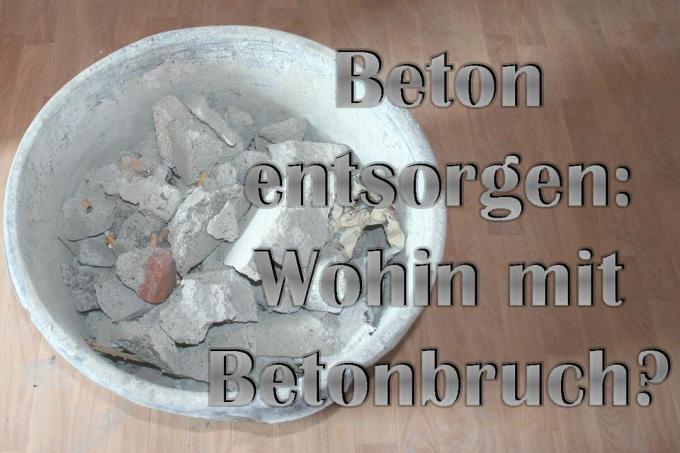
Table of contents
- concrete and broken concrete
- dispose of concrete
- Unreinforced concrete
- Costs
- Reinforced concrete types
- Types of concrete with plastics
- Types of concrete with toxic fibers
Concreting promises stability and durability. If the concrete is to be removed, it must be disposed of properly. This is not so easy, because not every type of concrete is declared as rubble per se.
concrete and broken concrete
Concretes are mineral building materials that are used in a wide variety of ways, such as for walls, as a foundation or as exposed concrete for the walkway in the garden. Strictly speaking, concrete breakage is the collective term for concrete demolition and concrete demolition, whereby Demolition material in road construction and demolition material in the conversion or demolition of buildings and Concrete goods accrue.
A notice:
In colloquial language, the terms concrete breakage and concrete demolition are used synonymously.
dispose of concrete
Since in many cases a component consists not only of concrete, but of the building material with fillers and Reinforcements are provided when disposing of the broken concrete depending on the nature of the material distinguished:
- Unreinforced / conventional concrete: no additives such as reinforcements or fillers
- Reinforced / reinforced types of concrete: provided with metal rods, welded wire mesh or reinforcing bars for reinforcement
- Types of concrete with plastics
- Types of concrete with toxic fibers such as asbestos
If you are unsure what type of concrete it is, you can have a concrete analysis carried out. If there is a risk of asbestos, you should definitely carry out a test for home users before starting work and wear protective clothing, safety glasses and a respirator (at least FFP2 mask).
A notice:
Aerated concrete, aerated concrete or Ytong are often referred to as concrete in colloquial language. However, disposal companies usually handle these materials separately from demolished concrete.
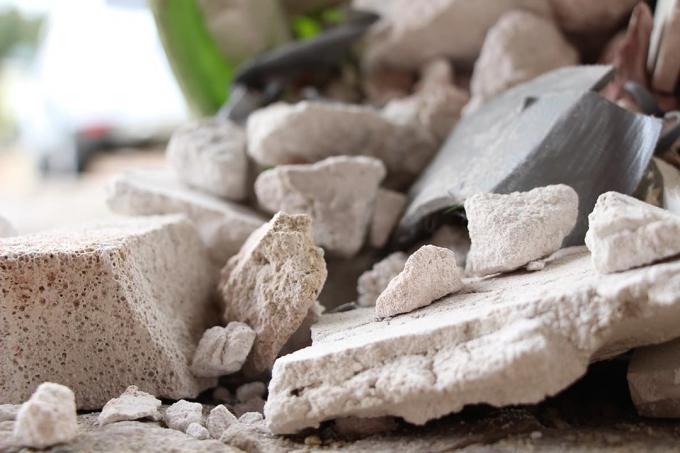
Unreinforced concrete
You can demolish concrete without fillers or steel reinforcements
- dispose of in a construction waste container or
- take it to the recycling center as construction waste.
When renting a waste container, make sure you have one for concrete demolition Book building rubble containers, as the material is recyclable and accordingly separated from other waste must be disposed of. If you do not comply with the prescribed waste separation, this means that the disposal company has to sort the entire container, which leads to considerable additional costs.
A notice:
Smaller quantities of demolished concrete can also be disposed of in the construction site mixed waste container. However, since the proportion may not exceed 15 percent, you should discuss this with the disposal company in advance.
Costs
The disposal costs are based on a rental container
- according to the capacity (cubic meters),
- the rental period and
- the distance to the place of order and from there to the recycling center.
If the container is in a public area, there are additional costs for parking permits and no-parking signs. Since the pure rental prices are very different, you should always compare the prices. This can be done easily with nationwide providers by entering your postal code on the disposal company's website. A phone call is often worthwhile with regional disposal companies.
Tip:
Some companies offer special tariffs when it comes to pure concrete demolition.
Generally speaking, a rubble container also costs
- three cubic meters between 85 and 125 euros per cubic meter
- five cubic meters between 50 and 88 euros per cubic meter
- seven cubic meters between 40 and 75 euros per cubic meter
If you have the opportunity to dispose of the demolished concrete yourself at the recycling center, this reduces the costs considerably. Because the recycling centers charge between three and five euros for ten liters.
Reinforced concrete types
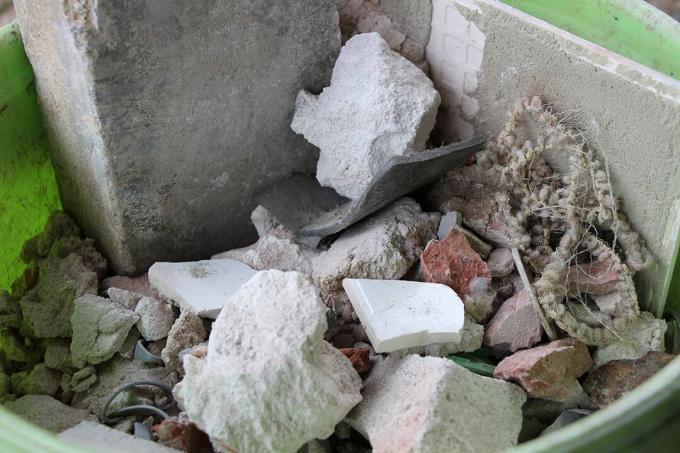
Compared to conventional concrete rubble, the disposal of reinforced concrete rubble is much more complicated, because the disposal company has to separate the reinforcement from the rubble. Since appropriate equipment is required for this, not every disposal company accepts reinforced material. Once you have overcome this hurdle, you should clarify the following questions in advance:
- Can reinforced and unreinforced demolished concrete be put in the same (construction waste) container?
- What is the maximum size (length x width x height) that a piece of reinforced broken concrete can have?
- How thick can the reinforcement be?
A notice:
Since disposal is more complex for the service provider, you usually have to reckon with higher costs.
Types of concrete with plastics
Concrete mixed with plastics is either landfilled or recycled. However, since their further processing is complex and cost-intensive, they are treated separately and are usually not assigned to the rubble. You should therefore find out about costs and disposal in advance.
Types of concrete with toxic fibers
In the case of demolition concrete mixed with toxic fibres, the statutory provisions on asbestos and toxic waste disposal apply. Therefore, the material may only be disposed of by certified companies that must take special precautions for removal, storage and transport to a hazardous waste disposal site. The disposal costs are correspondingly high.
A notice:
You have to reckon with concrete structures containing asbestos if they are components that were erected before the 1993 asbestos ban.
 Home editorial office
Home editorial office
Learn more about concrete, screed and cement
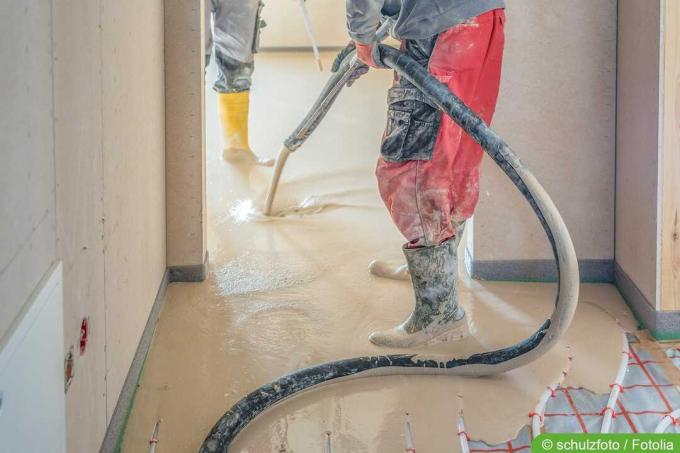
Fresh screed: when can it be walked on?
Screed is the basis for many floor coverings. It is durable and easy to care for. However, if the load is applied too quickly after application, it can be damaged, with costly consequences. We show how long the drying time is.

What is fiber concrete? | Features & Best Practices
What is fiber concrete? This term describes special concretes that are mixed with different fibers. They expand the possible uses in many ways and have an effective effect on the stability and durability of the concrete.

What is trass cement? | The differences to cement
Trass cement describes a special type of cement with corresponding amounts of trass. The additive makes the mortar mixed from it more resistant and is effectively suitable for certain areas of application. In this guide you will find out how the mixture differs from conventional cement mixtures.

What is flow concrete | Properties & Applications
As the name suggests, flowable concrete is a much more fluid mass than conventional concrete. This is made possible by adding a flow agent. You can find out about the properties and areas of application of concrete in this guide.

How much does a cubic meter of concrete cost? | precast concrete prices
The independent production of concrete is done in a few simple steps thanks to ready-mixes from the hardware store. The so-called ready-mixed concrete consists of various components and is available in different variants depending on the intended use. The price per cubic meter depends on several factors.
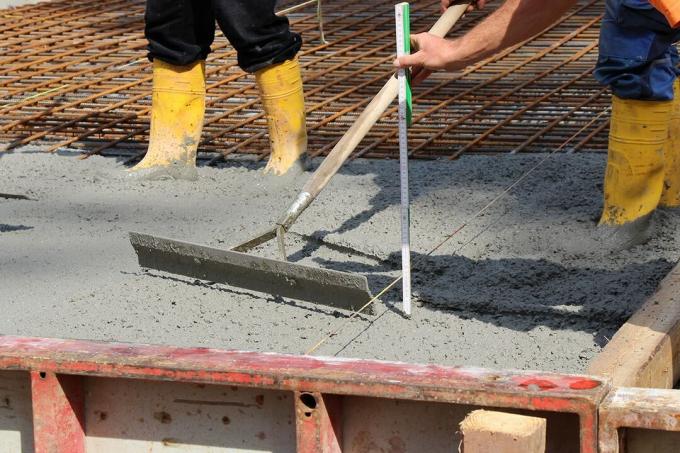
Drying time of foundations: how long does concrete dry?
The drying time of foundations is surprisingly long. Unlike with thin layers of concrete, the moisture can only escape from the large masses very slowly. But how long does the concrete dry and when can it be loaded?
